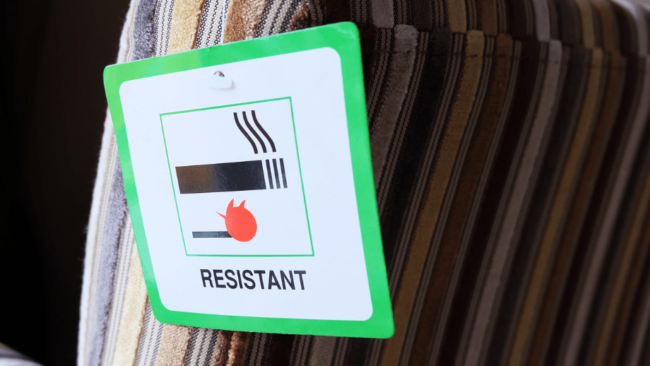New Monitoring Requirements for Brominated Flame Retardants
29 March 2023

Brominated Flame Retardants, or BFRs, are a type of chemical added to products during manufacture to increase their resistance to fire. They are therefore present in waste at the end of these products’ lifespan. BFRs are considered hazardous substances.
The Environment agency is currently reviewing environmental permits for incinerators and co-incinerators in response to the Waste Incineration BAT Conclusions published in December 2019 and new monitoring requirements for the incineration of BFRs.
This will affect incineration plants; however it is a wider issue for all WEEE recycling as well. These industries will have to use emissions testing services to measure the concentration of BFR within their stack emissions.
The Environment Agency is currently reviewing permits
The EA has ongoing engagement with operators on the permit review process and the recently released information note for operators provides further information on the new monitoring requirements. The EA will include these requirements in permits along with the dates by which they will need to be met. The note also provides further clarification on acceptable intervals between sampling to meet the requirements of the Mercury and Dioxins Monitoring Protocols.
New monitoring requirements
There are new requirements for plants burning waste containing brominated flame retardants to monitor for brominated dioxins.
The current version of the UK Interpretation Document requires periodic brominated dioxin monitoring for emissions to air (required by BAT 4) if it is taking in waste streams that are known to contain materials treated with brominated flame retardants (rather than incidentally as part of residual MSW input) e.g., domestic seating or the heavy plastic fraction from WEEE separation plants.
However, the Environment Agency has now decided to require all plants which burn any municipal solid waste (MSW) or similar including RDF or SRF to carry out brominated dioxin monitoring (including but not necessarily limited to waste codes 19 12 10, 20 03 01 and 20 03 07).
The Environment Agency has decided to require all plants burning municipal solid waste to do this as brominated flame retardants are widespread in their proliferation. They occur not only in domestic furniture (which is the EA’s priority focus now) but also in items such as carpets, mattresses, soft furnishings, household plastics, WEEE, and toys.
It is believed that it would be difficult to justify excluding general MSW given the likelihood it will contain relevant items.
The EA also recognises the difficulty in plants otherwise having to identify individual waste streams that are likely to contain waste with brominated flame retardants.
Do I need to conduct Brominated Dioxins Monitoring?
Permits for relevant plants will require biannual monitoring of brominated dioxins from 01/01/23 as originally planned (or quarterly in the first year of operation), and so operators of these plants should have ensured that they have made the necessary arrangements to meet these requirements from this date (irrespective of whether we have yet issued a varied permit with these requirements).
High temperature incinerators dedicated to the burning of hazardous waste will also be required to carry out periodic brominated dioxin monitoring to the same frequency. In practice this means that all relevant plants will be expected to carry out a round of brominated dioxin monitoring (alongside their other routine periodic monitoring) during the first and second halves of 2023.
The EA recognises though that in some cases there could be some practical difficulties around this and so, if necessary, we can agree temporary exemptions with operators in writing if we agree there is a reasonable justification, for example if there is a lack of available laboratories to do the testing.
Acceptable sampling intervals
The Mercury and Dioxins Monitoring Protocols requires 6-in-a-row results in the case of dioxins at the new emission limit value (ELV) from 03/12/23.
For both pollutants it is preferred that 6 results be obtained over as wide a period as possible, and to also be as recent as possible (to maximise the credibility of the sufficiently stable/low and stable demonstrations), whilst not placing undue burdens on operators through significant additional monitoring costs, nor forcing operators to make their submissions at the last minute.
For dioxins, the EA anticipates that most plants will simply be able to submit the last 3 years’ worth of routine periodic monitoring results to satisfy this requirement. However, for mercury the EA expect that operators will have to do some additional monitoring to generate the 6-in-a-row results required (because each test will need to be based on triplicate sampling)
The EA intend to update the Mercury Monitoring Protocol to make clear that an operator cannot carry out more than 1 set of triplicate tests on the same day and that tests should otherwise be spread out as far as reasonably practicable.
Why do we monitor brominated dioxins?
BFRs classified as persistent organic pollutants (POPS). Therefore, any end-of-life product or waste stream from products containing BFRs must be managed in a way that minimises the potential impact on human health and the environment. Human health impacts can include reproductive and developmental problems, damage to the immune system, interference with hormones, and cancer.
Efforts need to be undertaken to reduce current background exposure due to their toxicity and prevention or reduction of human exposure is best done via source-directed measures, i.e. strict control of industrial processes to reduce formation of dioxins (WHO).
